The 2022 Mercedes-AMG SL is beautifully powerful
The first Mercedes-Benz SL debuted nearly seven decades ago in Germany and was a success in both racing and sales to the public. Mercedes-AMG has launched the latest 2022 SL in the line, and the car has been completely reborn. Mercedes says its new sporty car combines genes from the original SL along with modern AMG driving performance.
The car has features characteristic of its SL lineage with a long wheelbase, short overhangs, long hood, the passenger compartment set well back on the chassis with a steeply raked windshield. The grille of the new SL was designed specifically to emphasize the width of the front and features 14 vertical slats as a design element linking the new car to SLs of the past, specifically the 300 SL racing car from 1952.
Mercedes also integrates LED headlamps with sharp outlines and slim LED rear lamps. The interior is designed around a theme of performance luxury with something Mercedes-AMG calls a "hyper analog" cockpit. As one would expect inside of a Mercedes-AMG vehicle, only the best materials and quality can be seen to bring the highest level of comfort, style, and performance. The interior of the 300 SL Roadster is minimalist and features an adjustable center display located in the center console that's focused on the driver.
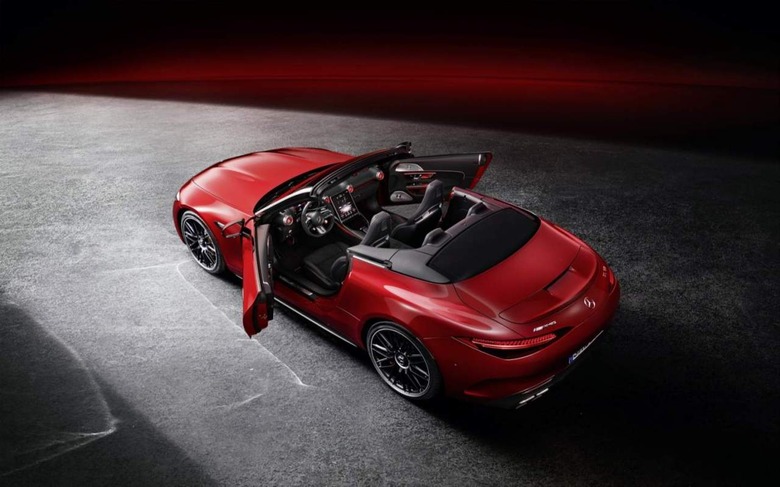
The vehicle is a 2+2, and the seats bring more functionality than in SLs of the past. Of particular note, the rear seats are designed for daily practicality and usable space. The interior design combines what Mercedes calls analog geometry and the digital world to create the "hyper analog" design that's attractive and functional without overwhelming.
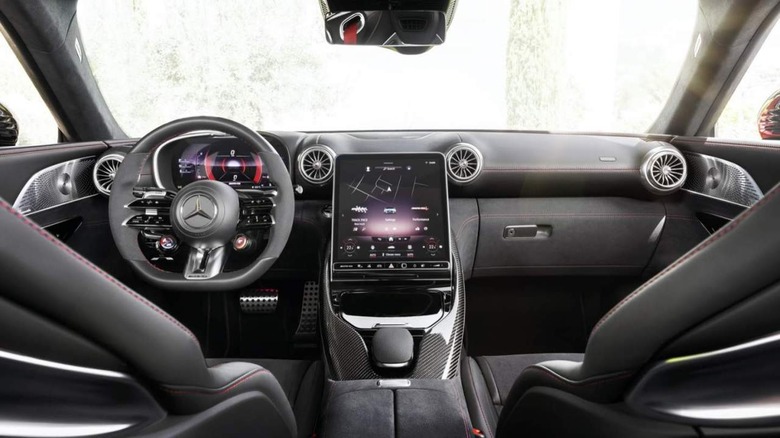
The instrument panel is fully digital and features the standard MBUX infotainment system with a choice of multiple display styles and different modes. The electrically adjustable AMG sports seats have a sculptural design. Mercedes fits the Roadster with its AIRSCARF neck-level heating system as standard to blow warm air into the passenger compartment from outlets in the head restraints of the seats for driver and passenger. The goal is to allow the owner to drop the top and enjoy fresh air even if it's cold out.
Mercedes-AMG designed the body of the SL utilizing a completely new 2+2 seat vehicle architecture designed to be as lightweight as possible utilizing composite aluminum and an aluminum space frame with a self-supporting structure. In addition, the design of the chassis provides maximum rigidity for precision driving, comfort, and sporty proportions. No components of the body or structure of the car are carried over from the past generation SL or any other AMG model.
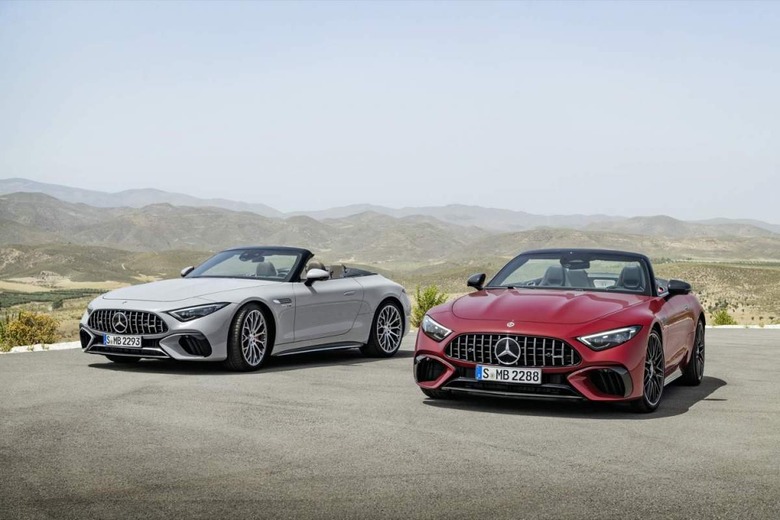
Compared to the previous SL series, the torsional rigidity of the body shell is 18 percent higher, transverse rigidity is 50 percent higher than the AMG GT Roadster, and longitudinal rigidity is 40 percent higher. The body shell alone weighs 595 pounds making a lightweight yet strong structure. Aerodynamics is also a focus for the vehicle design providing a drag coefficient of 0.31, which Mercedes says is excellent for an open-air sports car. For the first time, Mercedes has also integrated an AIRPANEL air control system with two pieces for improved aerodynamics. The first piece has vertical louvers hidden beneath the lower air intake in the front bumper. The second component is behind the upper air intake and has horizontal louvers. In normal operation, all louvers are closed, reducing drag allowing air to be directed to the car's underbody, reducing front-end lift. However, when temperatures on predefined components reach a specific number and the car needs cooling air, louvers open to allow maximum cooling to the heat exchangers.
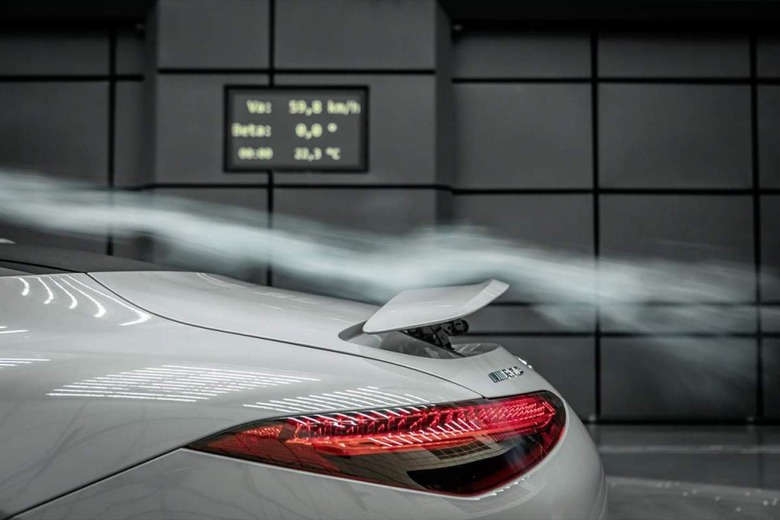
The rear spoiler is integrated into the trunk lid and is active, changing position depending on driving status. To determine the ideal position, software controlling the spoiler factors in driving speed, longitudinal and lateral acceleration, and steering speed. Considering all that data, the splitter can adjust through five different angular positions starting at 50 mph to optimize handling or reduce drag.
Buyers can choose the optional AMG Aerodynamics Package adding an active element hidden in the underbody in front of the engine to contribute to handling. The active element is a carbon profile weighing 4.4 pounds that reacts to AMG driving modes and extends downward to about 1.6 inches at 50 mph. The carbon profile component creates a Venturi effect to suck the car to the road surface and reduce front-axle lift. In addition, Mercedes AMG offers a range of aerodynamically optimized wheels in 20, or 21-inch diameters, including 20-inch wheels with plastic aero rings to save weight.
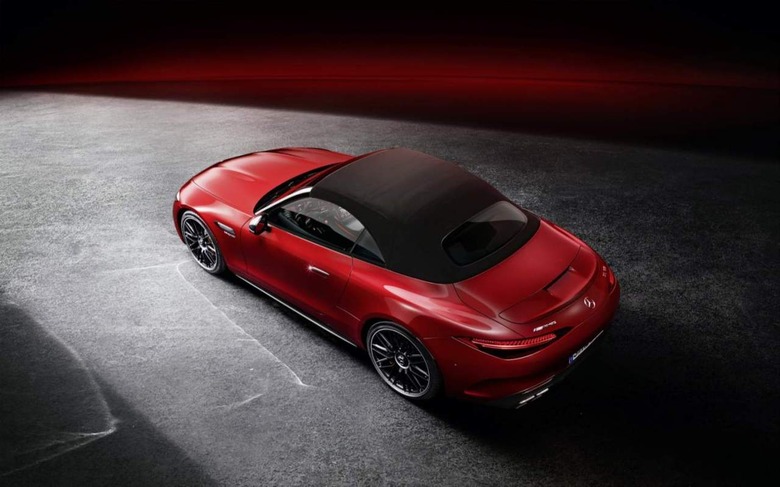
The SL also has a soft top optimized for lightweight and low center of gravity that replaces the previous metal vario roof. Moving back to a soft-top, Mercedes shaved 46 pounds and lowered the center of gravity for the all-new SL. Another interesting feature is that the soft top has a weight-saving z-fold mechanism that allowed Mercedes to dispense with a conventional soft-top compartment cover. The soft top is flush with the surface in its final position.
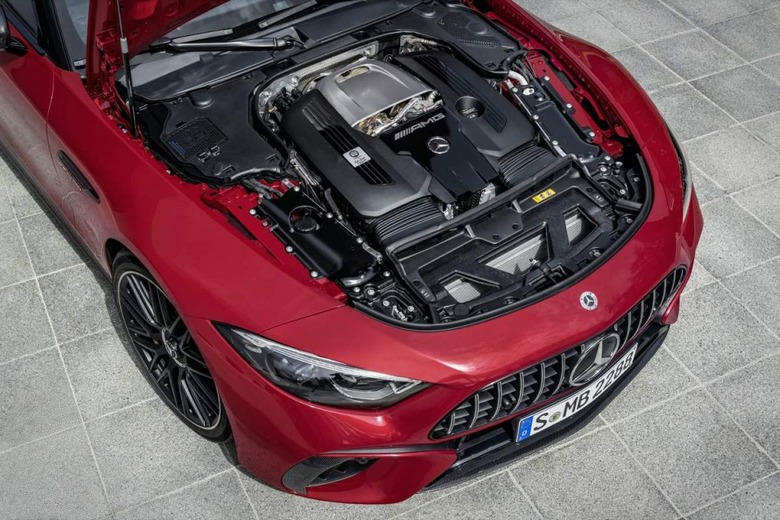
One of the highlights of any Mercedes-AMG vehicle is the engine. Mercedes-AMG continues with its "One Man, One Engine" principle with each SL engine built completely by one tech by hand. The SL offers two output levels of an AMG 4.0-liter V-8 biturbo engine. In the SL 63, which is the high-end model, the engine makes 577 horsepower and 590 pound-foot of torque. Fitted with that engine, the SL can reach 60 mph in 3.5 seconds. In the SL 55, the V-8 makes 469 horsepower and 516 pound-foot of torque. When fitted with that engine, the SL can reach 60 mph in 3.8 seconds. A performance hybrid version is in development.
Both engines are paired with an AMG SPEEDSHIFT MCT 9G transmission featuring a wet start-off clutch that replaces the torque converter for lower weight and optimized response. Both SL models feature AMG Performance 4MATIC+ all-wheel-drive standard. The SL 55 has a newly developed AMG RIDE CONTROL steel suspension featuring aluminum shock absorbers and lightweight coil springs. This is also the first production Mercedes-AMG vehicle utilizing a multi-link front axle with five links that are arranged entirely inside the wheel rim. The SL 63 uses AMG ACTIVE RIDE CONTROL suspension with active hydraulic anti-roll stabilization debuting in the model.
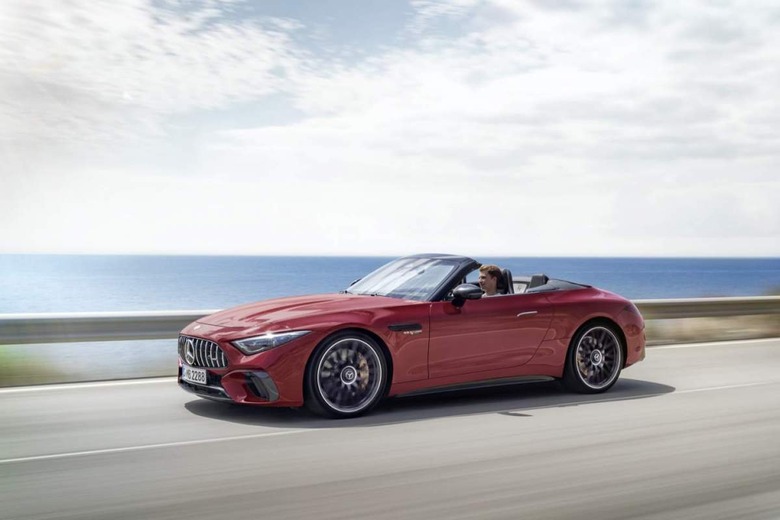
Another first for the new SL is active rear-axle steering that can turn the rear wheels in the opposite direction of the front at certain speeds to improve handling. The SL has six different driving modes, including slippery, comfort, sport, sport+, individual, and race. The race mode is standard on the SL 63 and optional with the AMG DYNAMIC PLUS package for the SL 55. The SL 63 also has a standard AMG TRACK PACE data logging system for use on the racetrack, and the system is optional for the SL 55. The system can also be fitted with an optional dash cam to record video complete with overlaid data for lap times, speed, acceleration, and more. Pricing and availability on the new Mercedes-AMG SL are unannounced at this time.
